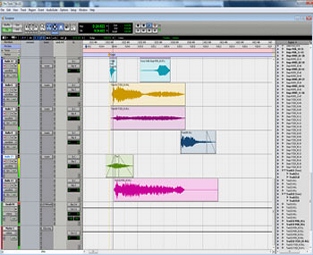George Spanos has published a new article at Game Sound Design talking about the implementation of sound design in video games, an interesting reading especially for those who are just starting in this world of sound design for video games.
Sound design for video games is quite a different animal than sound design for other media. Film, television, and other linear formats require the sound design to unfold at a very deliberate and controlled pace. After all, the outcome of linear formats is always known. The sound designer can therefore create sound-scapes and sound effects with the very deliberate intention of telling a story where the exact outcome is known to always happen the exact same way.
In video games we do not know the exact outcome of every scene. Sure, we know that the player has to perform ‘A’ to get to ‘B’ but we don’t know how long the player may take to get from ‘A’ to ‘B’ (in most games). For example, the player may choose to go down a route that is an indirect way of reaching the end of a level, thereby encountering any number of enemies or alternate paths. The main thing to realize is that, in games we usually cannot control the exact sequence of events that a player may experience. This is obviously called randomness.
It is for this very reason that designing and implementing sound for a video game should not be based upon events that “happen next” but rather, “events that may happen next”. This is why the great majority of games have their sounds broken down into chunks that are easily played back at the exact moment they are needed; at run time.
Contents:
- Sound Creation
- Sound File Creation
- Integrating Sound Design Into The Engine
- What Now?
- Conclusion

Just discovered this website. I’m doing a Masters degree in Sonic Arts and this website has some great interviews and tips. The latest (on Video Games Sound Design) is also something I’m very interested in. I’ve discovered this website a bit late (in terms of its existence) and the good thing about that is I can catch up on all the other great articles from the past. Great website. :)
Thanks, Aaron! I’m glad to know that you like the website :)
Can you talk about real-time signal processing within games. By this I mean having one flat, clean sound file that is processed in many different ways based one the players perspective and place within the game. For example, the player fires a gunshot outside, there is no reverb but there is just a faint echo. The faint echo is added by the game engine in real time. When the player moves into a tunnel, the gunshot has a lot of reverb introduced and a different echo. Any information on this would be greatly appreciated. Thanks!
Good post Aaron, I’ve just been starting with video game music recently with an iPhone game. I’ve been using SD2 and a few other VST’s from EastWest. Cheers!
Rather interesting concept on sound creation for games. I loved it! Thanks for a good read.